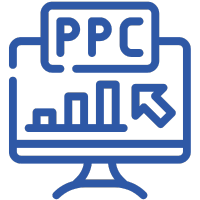Have any questions?
- ServiceNow
Ready to Transform Your Business — Risk-Free?
Start with a 30-day trial and experience the value before you pay.
- DevOpsCloud Implementation Services
At LiimraSoft, we bring years of deep, hands-on expertise in cloud computing—across AWS, Microsoft Azure, and Google Cloud—to help organizations unlock the full potential of high-performance cloud environments. Whether you're building in the public, private, or hybrid cloud, we design and implement solutions that are secure, scalable, and aligned with your business goals.
AssessOperateOptimizeScale / EvolveReady to Transform Your Business — Risk-Free?
Start with a 30-day trial and experience the value before you pay.
- Automotive
- Digital Marketing
The Leading Platform for Growing Practices
See How LiimraSoft Can Grow Your Practice
Ready to attract more patients, improve your online presence, and scale your clinic with confidence? In just 20 minutes, we’ll walk you through how our healthcare marketing platform helps medical and dental practices thrive.
- Dental Services
Ready to Transform Your Business — Risk-Free?
Start with a 30-day trial and experience the value before you pay.
- Networking
- MLOps
Power of Social Media Marketing
In today’s digital landscape, the influence of social media cannot be overstated. Social media platforms have transformed the way we communicate, connect, and do business. For businesses, leveraging the power of social media marketing has become essential to reach and engage with their target audience effectively.

Impact of Social Media Marketing
- Global Reach: Social media platforms provide access to a global audience, allowing businesses to expand their reach beyond geographical boundaries.
- Brand Awareness: Building and strengthening brand awareness is easier than ever, as social media enables businesses to interact with potential customers and establish a recognizable online presence.
- Audience Engagement: Social media fosters direct engagement with the audience through comments, likes, shares, and messages, creating a sense of community and trust.
- Cost-Effective: Compared to traditional advertising, social media marketing is cost-effective, making it an ideal choice for businesses of all sizes.
- Data-Driven Insights: Advanced analytics tools provide valuable insights into audience behavior, allowing businesses to refine their marketing strategies for better results.
Strategies for Social Media Success
To harness the full potential of social media marketing, businesses need a well-thought-out strategy that aligns with their goals and target audience. Here are some key strategies that have proven successful:
1. Define Clear Objectives
- Identify Goals: Determine what you want to achieve with your social media efforts, whether it’s increasing brand awareness, driving website traffic, generating leads, or boosting sales.
- SMART Goals: Set Specific, Measurable, Achievable, Relevant, and Time-bound goals to guide your strategy effectively.
2. Know Your Audience
- Audience Segmentation: Understand your target audience’s demographics, interests, and behaviors to create content that resonates with them.
- Persona Development: Create customer personas to visualize your ideal audience and tailor your content accordingly.
3. Choose the Right Platforms
- Platform Selection: Focus on the social media platforms most relevant to your audience and industry. For B2B, LinkedIn may be ideal, while visual industries may thrive on Instagram or Pinterest.
- Consistency: Maintain an active presence on selected platforms with regular posting and engagement.
4. Content Creation and Distribution
- Content Strategy: Develop a content calendar with a variety of content types, including blog posts, images, videos, and infographics.
- Quality Over Quantity: Prioritize quality content that provides value and resonates with your audience over the sheer volume of posts.
- Content Distribution: Use scheduling tools to ensure your content reaches your audience at optimal times.
5. Engage and Build Relationships
- Community Engagement: Respond to comments, messages, and mentions promptly to foster a sense of community.
- User-Generated Content: Encourage users to create content related to your brand, strengthening customer relationships.
6. Analytics and Optimization
- Data Analysis: Regularly review social media analytics to track the performance of your posts and campaigns.
- A/B Testing: Experiment with different content formats, posting times, and ad campaigns to optimize your strategy.

Leveraging Social Media Advertising
In addition to organic efforts, social media advertising is a powerful tool for reaching a wider audience and achieving specific objectives.
Types of Social Media Advertising
- Facebook Ads: Highly targeted ads that can promote your page, drive website traffic, or increase conversions.
- Instagram Ads: Visual ads that are ideal for showcasing products and brand aesthetics.
- LinkedIn Ads: Effective for B2B marketing, offering precise targeting options.
- Twitter Ads: Promote tweets to increase engagement, followers, or website clicks.
- YouTube Ads: Video ads that can be displayed before or during videos to reach a vast audience.
Benefits of Social Media Advertising
- Precise Targeting: Reach users based on demographics, interests, behavior, and more.
- Increased Visibility: Boost the visibility of your content and reach a larger audience.
- Lead Generation: Drive leads and conversions through lead generation forms and call-to-action buttons.
- Budget Control: Set your advertising budget to suit your financial goals and track ad spend.


























